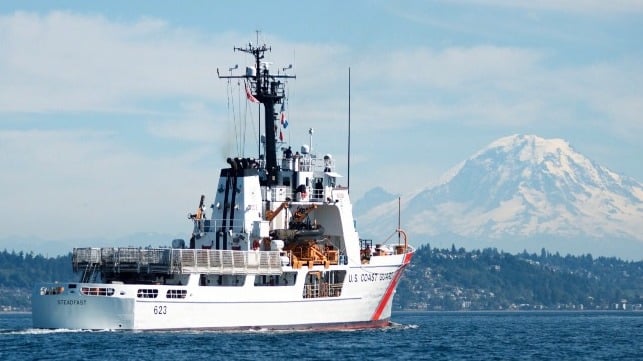U.S. Coast Guard Reduces Active Cutter Fleet Due to Personnel Shortage

The U.S Coast Guard is adapting to a workforce shortage by making operational adjustments, aiming to preserve its capacity to fulfill critical missions. The agency has 10 percent fewer enlisted personnel than needed, and it has acknowledged that it cannot continue to operate as before with fewer people. Rather than attempt to run all its vessels shorthanded, it will be idling some of its cutters and transferring crew to fully man the remaining active vessels.
“We cannot do the same with less. Conducting our missions is often inherently dangerous, and doing so without enough crew puts our members and the American public at increased risk,” said Adm. Linda Fagan, U.S. Coast Guard Commandant.
While the agency says there will be no loss of search and rescue (SAR) capabilities, it will be reducing the number of operating vessels. Three medium-endurance cutters (WMECs) - the oldest oceangoing vessels in the fleet - will be put in layup pending decommissioning. Seven 87-foot patrol boats will also be laid up, with plans for eventual reactivation. Five of the 65-foot harbor tugs will be put on standby in case they are needed for icebreaking, but will not be continuously manned. Last on the list, two of the 154-foot fast response cutters will head into an uncrewed overhaul period at the Coast Guard Yard.
“The ‘Trackline to 10,000,’ to have ten thousand members assigned to afloat units, is still the goal for our future fleet and we will get there,” said Capt. John Driscoll, the Chief of the Office of Cutter Forces. “We need to adjust our operating capacity now so we can prepare for the future. We will gradually grow fleet capacity back through continued construction of ships with the latest technology and the best crew habitability."
The service will also be making cuts on shore. The Coast Guard has 44 stations and 36 aids to navigation teams (ANTs), which the agency says have more billets than needed. Owing to the workforce shortage, the stations will be reduced to their staffing formula standard and the ANTs to one billet below their staffing standards.
Other changes that will affect employees include transfer of crews at all 23 small seasonal stations to their parent command; and suspension of operations of six non-response boat units, with their crews being reassigned. 19 stations whose SAR response capabilities are deemed redundant will be reclassified as "scheduled mission units." In support services, some positions will be left vacant "with minimum disruption in providing customer service."
The Coast Guard noted that while the risk-based adjustments will help manage its workforce shortage, gaps will still remain, and it could call for more changes going forward.
All branches of the U.S. military (except for the Marine Corps) have been struggling with recruitment and retention in a tight hiring market. The U.S. Coast Guard is short by 3,500 personnel this year, and the U.S. Navy missed its FY2023 recruiting targets by about 7,000 people.
According to Adm. Fagan, COVID took a toll on recruitment, creating part of the deficit that the service is digging out of today. The good news, Fagan said at a forum last month, is that the recruiting numbers are starting to rebound in "significant and positive ways" - and the people who are signing up are the people that the Coast Guard wants.
"This isn't a hurricane, it's taken us years to get here and it's going to take sustained effort to move us forward," Fagan said.
